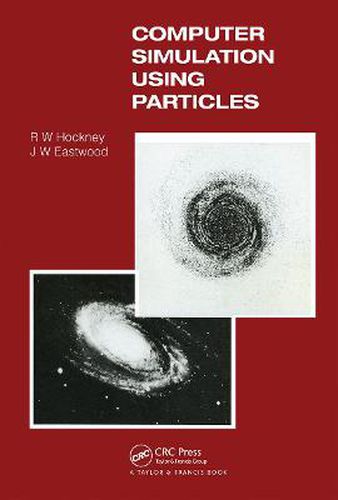Readings Newsletter
Become a Readings Member to make your shopping experience even easier.
Sign in or sign up for free!
You’re not far away from qualifying for FREE standard shipping within Australia
You’ve qualified for FREE standard shipping within Australia
The cart is loading…






Computer simulation of systems has become an important tool in scientific research and engineering design, including the simulation of systems through the motion of their constituent particles. Important examples of this are the motion of stars in galaxies, ions in hot gas plasmas, electrons in semiconductor devices, and atoms in solids and liquids. The behavior of the system is studied by programming into the computer a model of the system and then performing experiments with this model. New scientific insight is obtained by observing such computer experiments, often for controlled conditions that are not accessible in the laboratory.
Computer Simulation using Particles deals with the simulation of systems by following the motion of their constituent particles. This book provides an introduction to simulation using particles based on the NGP, CIC, and P3M algorithms and the programming principles that assist with the preparations of large simulation programs based on the OLYMPUS methodology. It also includes case study examples in the fields of astrophysics, plasmas, semiconductors, and ionic solids as well as more detailed mathematical treatment of the models, such as their errors, dispersion, and optimization.
This resource will help you understand how engineering design can be assisted by the ability to predict performance using the computer model before embarking on costly and time-consuming manufacture.
$9.00 standard shipping within Australia
FREE standard shipping within Australia for orders over $100.00
Express & International shipping calculated at checkout
Computer simulation of systems has become an important tool in scientific research and engineering design, including the simulation of systems through the motion of their constituent particles. Important examples of this are the motion of stars in galaxies, ions in hot gas plasmas, electrons in semiconductor devices, and atoms in solids and liquids. The behavior of the system is studied by programming into the computer a model of the system and then performing experiments with this model. New scientific insight is obtained by observing such computer experiments, often for controlled conditions that are not accessible in the laboratory.
Computer Simulation using Particles deals with the simulation of systems by following the motion of their constituent particles. This book provides an introduction to simulation using particles based on the NGP, CIC, and P3M algorithms and the programming principles that assist with the preparations of large simulation programs based on the OLYMPUS methodology. It also includes case study examples in the fields of astrophysics, plasmas, semiconductors, and ionic solids as well as more detailed mathematical treatment of the models, such as their errors, dispersion, and optimization.
This resource will help you understand how engineering design can be assisted by the ability to predict performance using the computer model before embarking on costly and time-consuming manufacture.